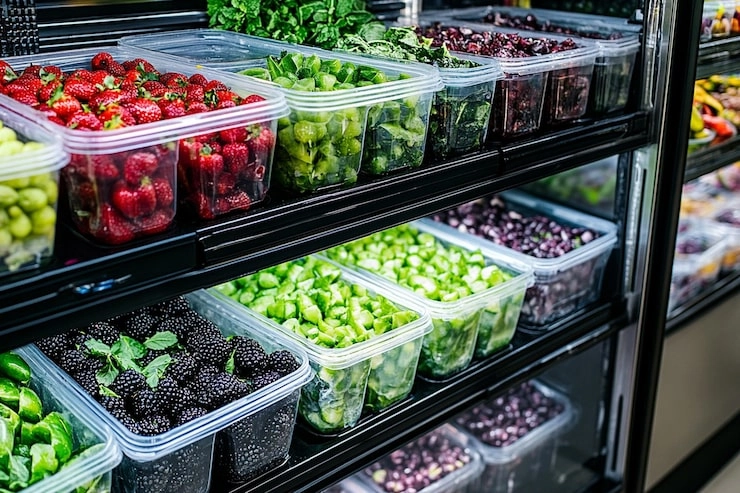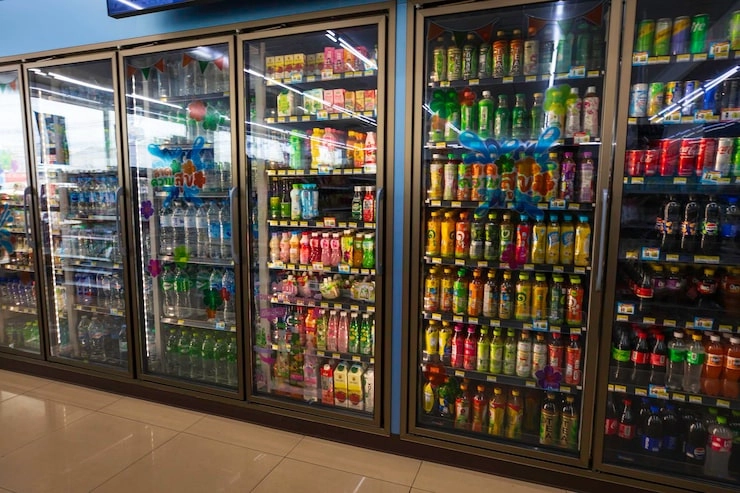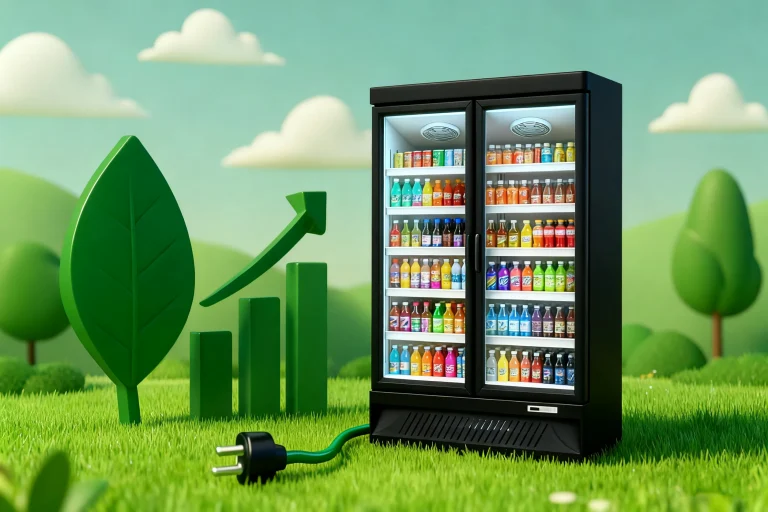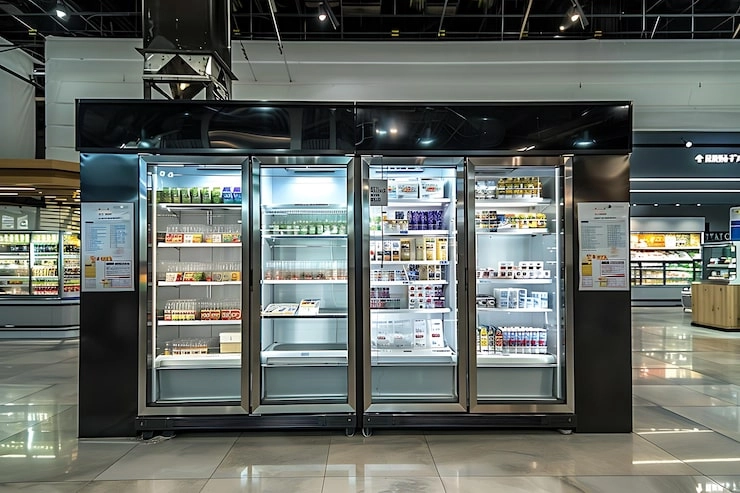
Walk into any busy grocery store at 6 a.m. The lights hum. Milk stays ice-cold. Fish sits rock-solid frozen. None of that happens by accident. Strong commercial refrigeration keeps everything safe, fresh, and ready for customers. One weak link and you lose stock—and money—fast.
Owners who choose energy-smart equipment sleep better. Their power bills drop hard every month, and they hit sustainability targets without even trying. It’s the kind of upgrade that pays you back year after year.
The Critical Role of Door Seals in Commercial Refrigeration
That black rubber strip around the door? It’s not decoration. It’s the hardest-working part most people never notice—until it fails.
How Door Seals Affect Cooling Performance
Good gaskets lock cold air inside and keep warm, sticky outside air out. Everything stays calm. The compressor barely breaks a sweat. Life is good.
Let one tiny tear show up, though, and chaos sneaks in. Warm air pours through the gap. Frost explodes across the coils. The unit runs non-stop. Electricity costs skyrocket. Evaporator fins ice over. Eventually coils split. Nobody wants that repair bill.
Signs of Worn or Damaged Door Seals
Stay ahead of trouble. Walk the floor once a month with a flashlight. Hunt for cracks, rips, or flat spots on every gasket. Does the door feel “bouncy” when you close it? Does it drift open an inch on its own? Listen for hissing air. Check your last three electric bills—any unexplained spike usually points straight at bad seals.
Best Practices for Door Seal Maintenance
Wash them every week with warm water and a drop of dish soap. Food spills turn sticky and wreck rubber fast. Dry them completely afterward. Teach the crew to close doors with a gentle push, not a kick or slam. When a gasket looks beat, swap it out the same day. A ten-dollar part can save you thousands in wasted power and thrown-out food.
What’s more, stock a spare set of common sizes. Downtime kills margins.
Enhancing Temperature Control Efficiency
Swinging temperatures ruin product fast. One degree too warm and bacteria throw a party. Consistency wins every time.
Factors That Influence Temperature Stability
Never park a unit next to the pizza oven or under a skylight. Heat fights cold—and cold loses, every single shift. Staff who prop doors open “just for a second” dump hundreds of dollars of chilled air onto the floor. Shelves packed like a Tetris game block vents. Cold air can’t circulate. You end up with frozen lettuce on top and warm milk on the bottom.
Technologies That Support Precise Temperature Control
Modern units fight back smart. Digital controllers read to the tenth of a degree and scream if anything drifts. Sensors watch how full the cabinet is and slow the compressor when the store is quiet. Some cabinets run three separate zones—one for ice cream, one for drinks, one for deli meats—all in the same box. Energy waste plummets. Product life stretches.
Strategies to Improve Refrigeration Efficiency
Give every unit breathing room. Ten centimeters behind, five on each side—non-negotiable. Dust-covered condenser coils act like blankets; brush them clean every quarter. Inside, load light and smart. Leave gaps so air can dance around packages. Perforated shelves help a ton.
And never skip pro service. Twice a year a tech should oil fans, check refrigerant, and tighten belts. An ounce of prevention really is worth a truckload of cure.
Energy Efficiency and Cost Savings in Commercial Refrigeration
Numbers don’t lie. Efficient gear prints money.
The Impact of Efficient Systems on Operating Costs
Switch to Create Refrigeration’s best inverter compressors and watch the meter slow down. Speed adjusts smoothly to actual demand—no more on-off hammering. Stores routinely cut power use 40–50% the first year. Compressors run cooler, quieter, longer. Breakdowns almost vanish. Most units easily outlast the old clunkers by five to eight years.
Energy-Saving Features to Look For in Commercial Units
Demand these: variable-speed compressors, full LED lighting top to bottom, electronic expansion valves, and thick foam insulation. On open displays, insist on night curtains that drop automatically after closing. Add double or triple air curtains across the front. Every single upgrade chips away at the bill and the planet’s load.
Choosing the Right Commercial Refrigeration Equipment for Your Needs
Buy wrong and you regret it daily. Buy right and you forget it’s even there.
Key Considerations When Selecting a Unit
Know your menu cold. Ice cream screams for −22°C or lower. Fresh produce hates anything below 0°C. Chocolate and flowers throw tantrums if humidity swings. Measure twice—door swing, aisle width, ceiling height. One overlooked centimeter can turn delivery day into a nightmare.
- Island Freezers rule wide-open sales floors and scream “buy me.”
- Upright reach-ins tuck into back rooms yet still sell through glass doors.
- Multideck open chillers turn passing traffic into impulse purchases.
High-traffic convenience stores live on wide-open fronts. Fine-dining kitchens love quiet solid-door cabinets that disappear against the wall.
Examples of Reliable Equipment Options from Create Refrigeration
- Supermarket Combined Island Freezer: Giant sliding lids, auto defrost, pinpoint digital control. Holds a mountain of product while sipping roughly one-fourth the power of old-school ventilated islands the same size. Big-box heaven.
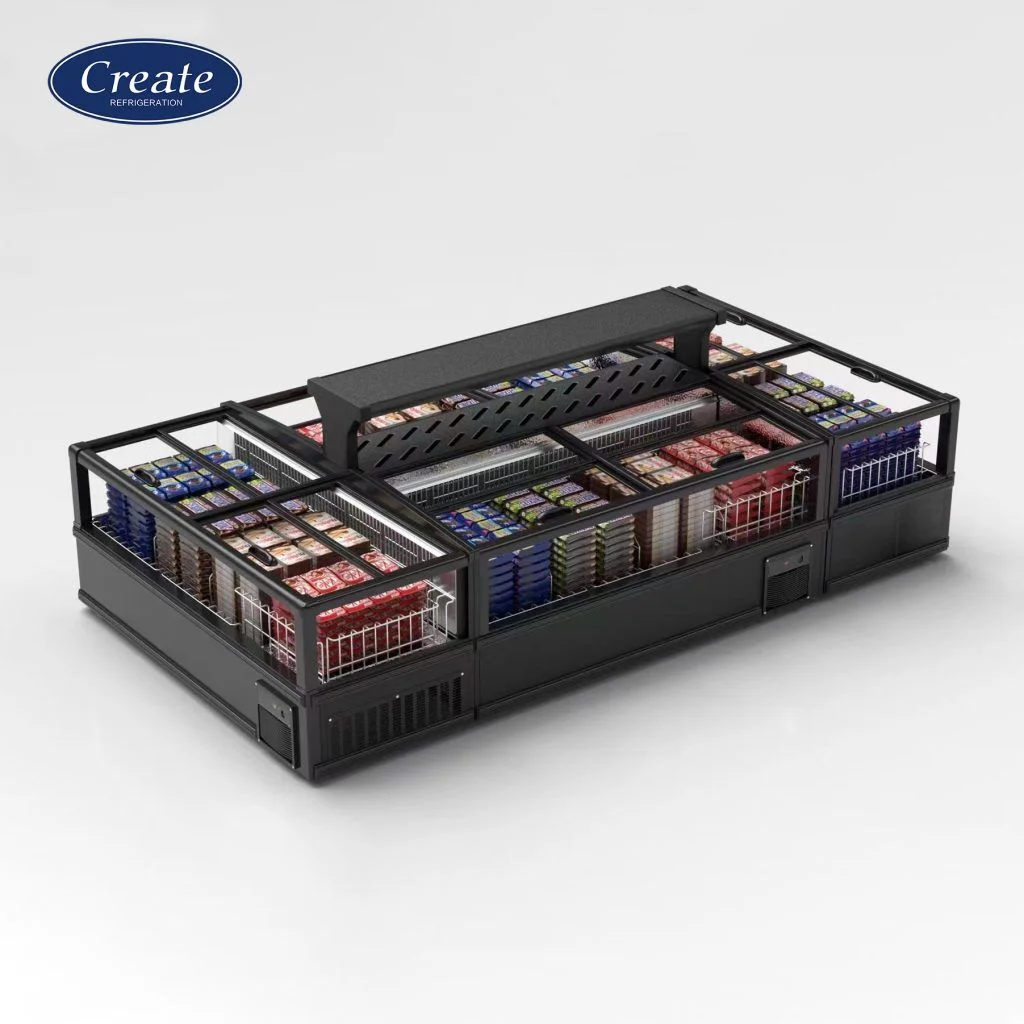
- Single Island Display Freezer: Clear glass tops let shoppers window-shop without lifting a finger. Link them end-to-end or stand alone for hot promotions. Seasonal items move fast.
- Multideck Open Display Chiller: Pulls temperature down lightning quick and holds it steady shelf to shelf. Vertical LED strips light everything perfectly. Double air curtains slam the door on energy loss while customers grab and go.
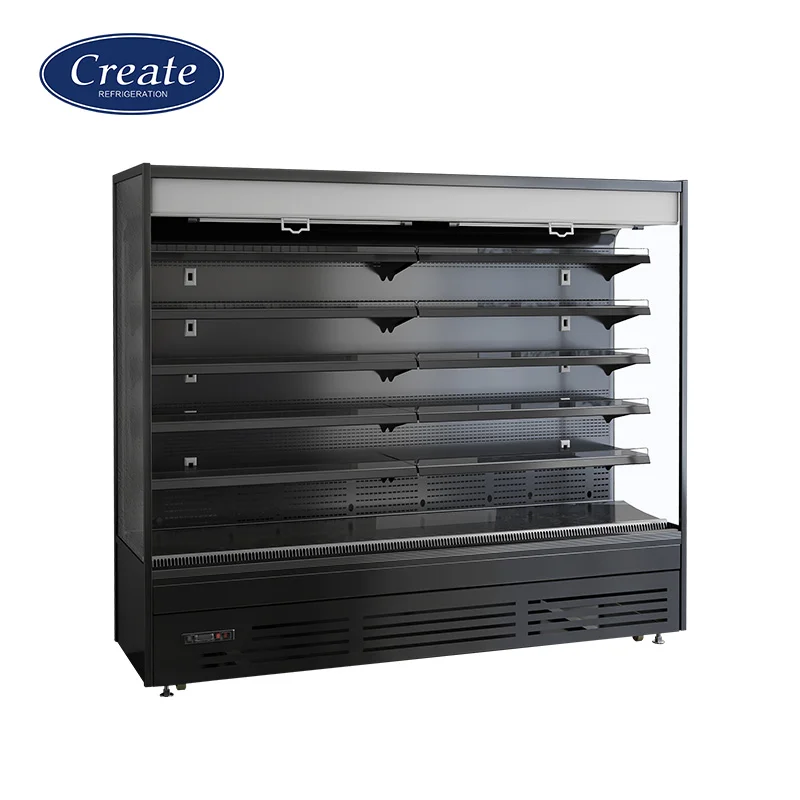
Create Refrigeration: A Trusted Supplier of Commercial Cooling Solutions
SHANDONG CREATE REFRIGERATION CO., LTD. operates out of Xingfu Industrial Park, Binzhou City, Shandong Province, China. Sixteen-plus years in the game, shipping to every continent that sells food.
Besides display coolers and freezers, they craft full stainless kitchen lines, handle complete OEM/ODM projects, draw free 3D store layouts, and ship DDP so you never see a customs form. North America, Europe, Southeast Asia, Middle East—name the market, they’re already there.
Summary of Key Insights on Efficient Commercial Refrigeration Practices
Win with three simple rules: check everything often, lean hard on smart tech, and buy once from people who know what they’re doing. Food stays perfect. Bills stay tiny. The planet stays happier. Partners like Create Refrigeration turn those rules into everyday reality—and bigger profits.
FAQs:
Q1: How often should commercial refrigeration door seals be inspected?
A: Once a month, no excuses. Shine a light, tug gently, look for cracks or hardness. Fix problems the same week.
Q2: What is the ideal temperature range for commercial refrigerators?
A: Chill zones 1°C–4°C (34°F–39°F). Frozen zones −18°C (0°F) or colder—some products demand −25°C for perfect texture.
Q3: Can upgrading my refrigeration unit reduce my electricity bills?
A: Big time. New inverter units with LEDs and smart controls routinely drop power draw 40–50% right out of the crate. Most owners pay off the upgrade in two to three years purely through lower bills, then pocket pure profit after that.



